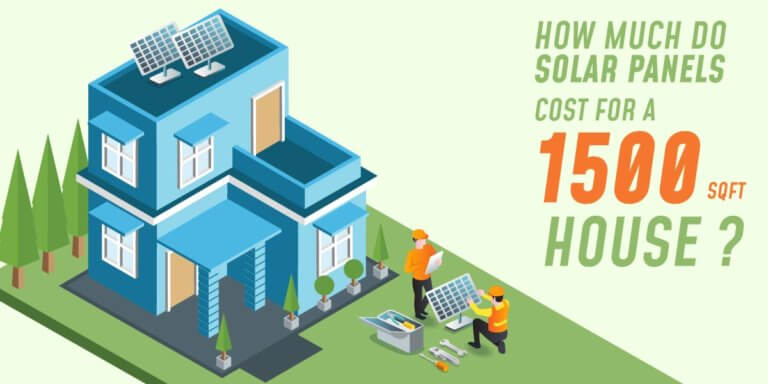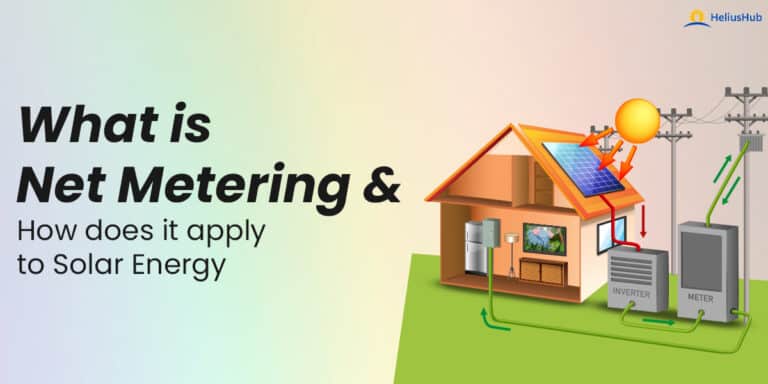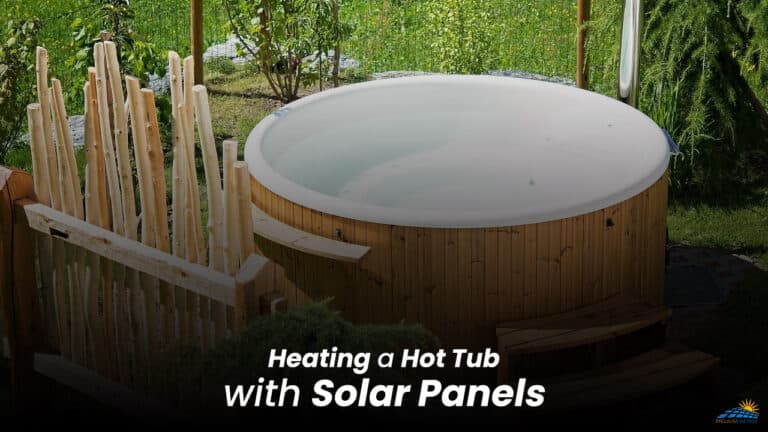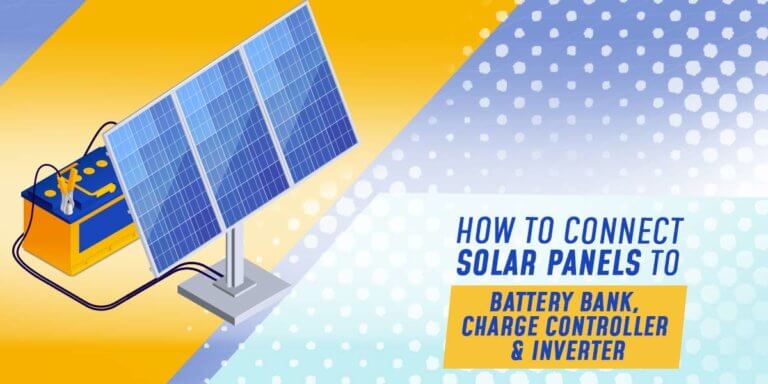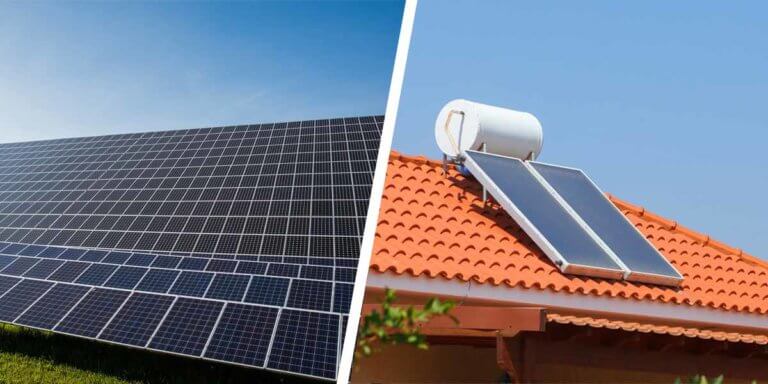Pros And Cons Of Living Next To A Solar Farm
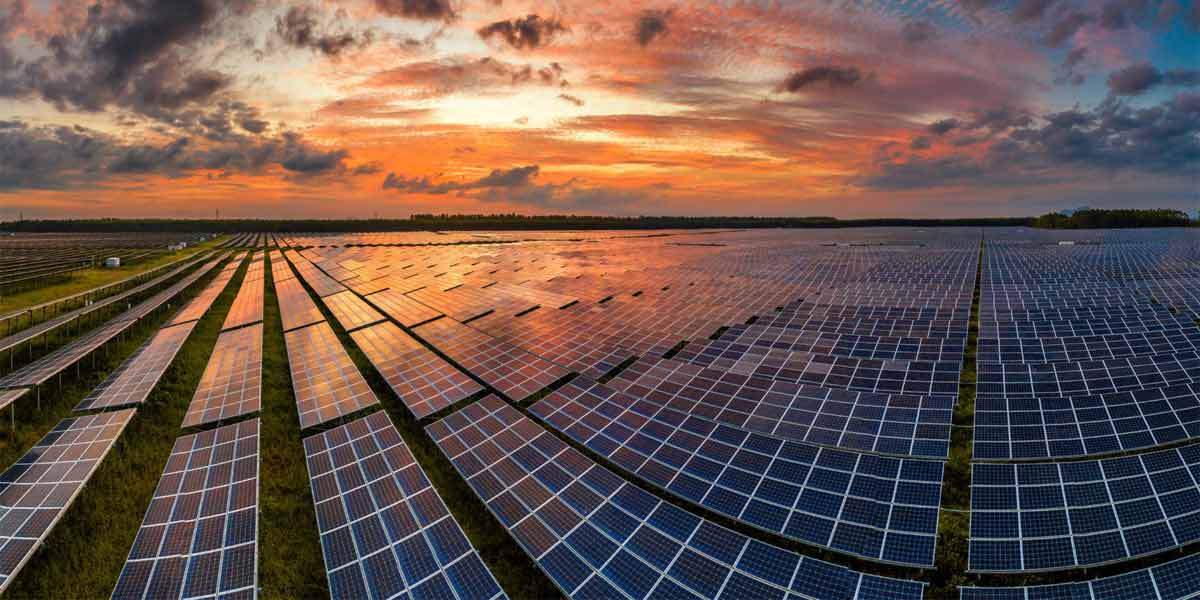
Solar power has played a crucial role in sustaining non-renewable energy sources such as coal, petroleum, natural gas, etc. Solar farms use numerous solar panels to convert renewable energy from sunlight into electrical energy. Renewable energy and solar farms have become a big industry in America and many other countries globally.
As you would expect, even solar farms have their own set of advantages and disadvantages, as discussed in another article of ours. This article will talk about the advantages and disadvantages of living next to a solar farm and how people living close to the farm are affected by it.
What Are Solar Farms?
A solar farm, as mentioned above, is a collection of solar panels that absorb energy from the sun and convert it into electricity. This electricity is sent to power stations, which we later consume. They are also known as photovoltaic power stations, and they take acres of land to set up.
If you are interested in the procedure of setting up a solar farm, you can read our article on “How to Start a Solar Farm Business.”
Solar Farms Pros And Cons
Advantages Of Living Near A Solar farm

Today, solar energy is regarded as an efficient kind of energy. Since solar energy has more advantages than drawbacks, it can be said that having a house near a solar farm is beneficial. IRENA research revealed that solar energy is the cheapest form of power to produce as solar goes for 0.10KWH while fossils charge for 0.17KWH, making the former more affordable. There are also many advantages, and some of them are listed below:
1. The Surrounding Area is Quiet
Living in urban areas has always been a lot of hustle. The loud and unwanted noise from the city’s construction, parties, or any other activity makes one dizzy sometimes.
If you prefer to stay away from it, solar farms are an option for you because they are set up in areas far from human activities, making you feel like you are in the lap of nature.
For example, people residing in Topaz Farm, built on the plains of Carrizo, are living peacefully because it has been set up in an area with the least human activities. Moreover, The process of harnessing is also very quiet compared to the wind power plants where turbines make a noisy sound, making people evenings sleepless and disoriented.
2. No Power Interruptions
Unlike the old solar panels, the new ones do not need to rely on sunlight all the time; they just need light to perform the operation. So, if the weather is bad, you still have access to electricity all the time.
US power plants provide electricity to many homes, marketing to their customers the reliable type of electricity they are receiving.
To make it more efficient, engineers are always available to fix the technical crunch then and there. Many solar power plants also provide free electricity to their surrounding neighbors as a token of appreciation, which also acts as a marketing tool to promote solar farms.
3. No Pollution
Research says that if the use of solar power increases, atmospheric toxicity will be reduced by half in 30 years. You may be aware of the number of deaths each year due to pollution. Solar power solves that problem. It generates zero pollution. Yes, it does not release any harmful gas into the environment. As said above, the process is straightforward.
Harnessing energy from the sun and converting it into solar energy is all that this process demands. Imagine yourself living in an area with constant dust and gas all around you. You might end up with bad health, right? Living near a solar farm protects you from toxicity!
4. Security
There is always a theft risk of losing the solar panels as they are costly. Hence, CCTV cameras and electric fences are always kept up to date to secure them. Also, the billion-dollar security is paramount in private and public solar farms. The neighbors in the surroundings of the solar farm benefit from the security guard’s 24/7 presence.
The farms are also under surveillance and being patrolled throughout. Apart from theft, the farm has a high voltage, which is risky, so an uptight watch is kept. And if any strange attack is noticed, the officials are reported immediately to fix the problem. Thus, residing near solar farms is secure.
5. Job Opportunity
Maintaining a solar farm requires a lot of people, from the technical staff to the manual labor. From setting up the equipment to patrolling it, many people are needed. Hence, job opportunities are plenty.
Approximately 500 to 800 people are required to maintain the solar farm, creating a livelihood for many. IRENA research shows the data of number of jobs generated by solar energy sector. Also, residents can create business opportunities out of it since there are so many people working that they might need food, water, daily needs, and other basic stuff.
In a nutshell, governments are trying to keep up the significant strides to reduce carbon emissions and hence are establishing projects and ways to set up solar farms to save the Earth from the depletion of resources and the toxic environment.
They have conducted various research studies to obtain data about the satisfactory and unsatisfactory levels of the people residing near solar farms and work towards making them better. However, if there are pros to something, there might also be cons to it.
Disadvantages of Living near a Solar Farm
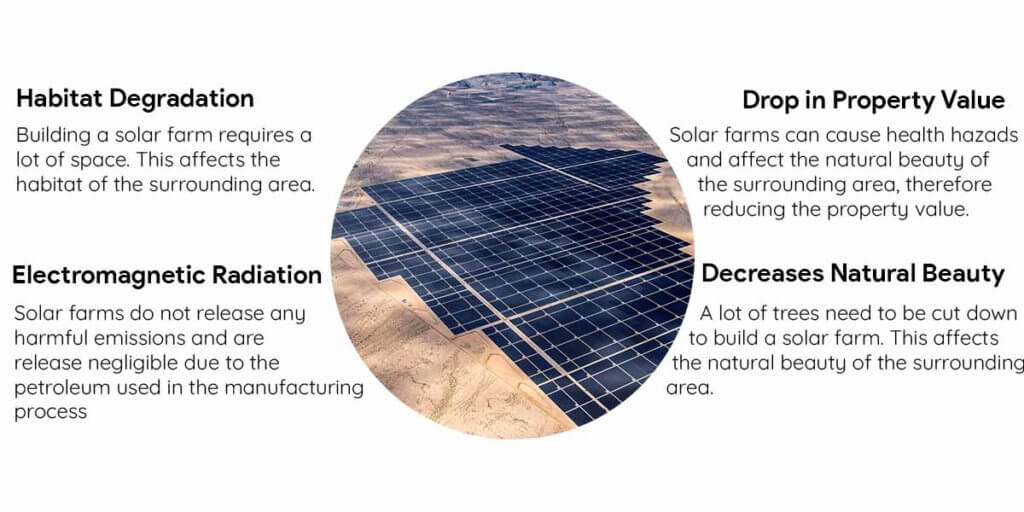
For instance, living near solar power plants could negatively affect people who suffer from EMF or EHS. Also, the batteries used in the plants may affect you if not disposed of properly. Here are a few disadvantages to keep in mind if you are going to live next to a solar farm.
1. Habitat Degradation
The expansion of solar power could pose ecological risks. This includes habitat loss, alteration in land use, the strain on water resources, exposure to hazardous materials, and pollution of soil, air, and water resources. Solar panels are made up of toxic metals that can leach out into the environment and possibly pose a public health hazard if they get into the groundwater supply.
2. Electromagnetic Radiations
Solar energy is generated by nuclear reactions within the sun’s body. This energy reaches the surface of the Earth in the form of electromagnetic radiation. The higher the frequency of radiation, the more likely it is to cause harm to our bodies.
Sometimes they can be dangerous to living organisms, like how they may cause cancer, migraines, etc. This radiation is also known as ionizing radiation, and it is inflammable. Overexposure to this radiation may cause damage to cells or cause severe sunburn.
3. Drop-In Property Values
This is one of the significant disadvantages or alarming factors. Consequently, it has destroyed mother earth. No one wants to live in a place with no trees or if nature has just vanished. People looking to buy some property look for specific criteria to be met, such as good interiors, natural view, good environment, etc.
All of these are necessary to ensure comfort after buying property. If the property is near the solar farm, there will be no sign of nature. Subsequently, it will affect your health too. That’s why the value of the property drops automatically.
4. Decreases Natural Beauty
“Beauty is in the eye of the beholder. “Solar farms are set up on a large scale. It looks so bad and destroys the beauty of the surrounding area. It’s like a single drop of poison in a glass of water.
Most of the solar panels are angled and placed in the best way, but sometimes they are placed in an ugly manner, and all you can see is solar panels around you when you look outside.
5. Health Risks Living Near Solar Farm
Solar farms are a form of renewable energy infrastructure that converts solar radiation into electrical energy. While Solar farms are considered a sustainable and environmentally friendly alternative to fossil fuels, living near a solar farm may pose certain health risks.
One potential risk is exposure to electromagnetic fields (EMF) generated by solar panels, which could cause adverse health effects such as headaches, fatigue, and insomnia.
Another health risk of living near a solar farm is exposure to hazardous chemicals used in manufacturing and maintaining solar panels. Additionally, there may be noise pollution from the operation of solar farm equipment, which could lead to hearing damage and other health problems.
Conclusion
The advantages and disadvantages discussed above gave us a fair view of what happens when living next to a solar farm. Sure, there are good reasons to stay near it, but there are also negatives to it. Hence, it can be concluded that living very near the solar farm is not suggestible, but yes, in an adequate vicinity, it is not an issue!

